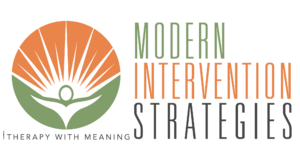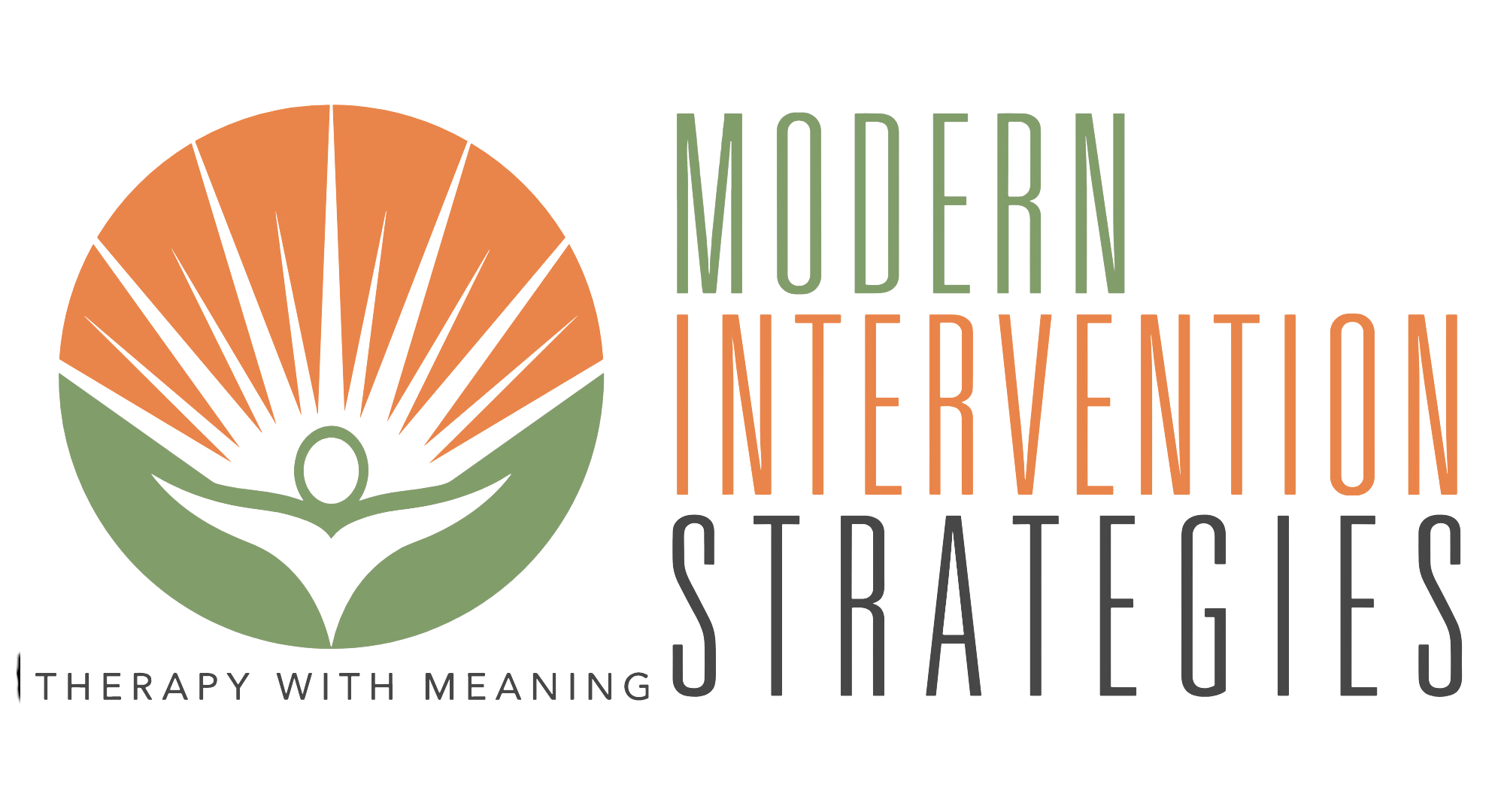Family dynamics can be complex. They can be a source of strength, but also of conflict and stress.
When these dynamics become challenging, family therapy can be a powerful tool. It can help families navigate difficult situations and foster healthier relationships.
This article explores effective family therapy techniques for healing. It aims to provide a comprehensive understanding of these techniques, their benefits, and when they might be applied.
Whether you’re a family seeking counseling, a therapist specializing in family therapy, or simply interested in understanding family dynamics, this guide is for you. It’s designed to be a resource for anyone looking to expand their knowledge of family therapy methods.
We’ll delve into various therapy techniques, from Structural and Strategic Family Therapy to innovative approaches like biopsychosocial-spiritual techniques. We’ll also discuss how these methods can address specific issues, such as conflict, grief, and substance abuse.
By the end of this article, you’ll have a deeper understanding of how family therapy techniques can aid in the healing process. You’ll also gain insights into how these techniques can be implemented to foster healthier, more harmonious family relationships.
Join us as we explore the path to healing through effective family therapy techniques.
Understanding Family Therapy
Family therapy is a form of counseling for families that views the group as interconnected. Unlike individual therapy, it focuses on the family as a whole. The therapist helps facilitate conversation and understanding among family members.
This form of therapy is rooted in the belief that family problems are not just isolated issues. They are often symptoms of larger systemic issues within the family unit. By addressing these systemic issues, families can work towards healthier dynamics.
Family therapy involves various techniques tailored to meet specific needs. These techniques help break down barriers and improve communication. Some of the common methods include:
- Structural Family Therapy
- Strategic Family Therapy
- Systemic Family Therapy
- Narrative Family Therapy
- Bowenian Family Therapy
Through these techniques, therapists assist families in resolving conflicts and changing their interactions. The goal is to promote a supportive and harmonious environment for all members.

Family therapy recognizes that each family is unique. The techniques are adaptable to suit different family structures and cultural backgrounds. This ensures that the therapy is relevant and effective for the family involved.
What is Family Therapy?
Family therapy is a therapeutic approach that involves family members working together. It aims to address emotional, psychological, or relational issues within the family.
The therapist acts as a facilitator, guiding the family towards better communication and problem-solving strategies. The sessions may involve all or only some family members, depending on the issues being addressed.
This type of therapy is beneficial in handling a wide range of family-related issues. It can be helpful for managing conflicts, coping with major life changes, or dealing with mental health challenges.
Goals of Family Therapy
One of the primary goals of family therapy is to improve communication among family members. Effective communication can reduce misunderstandings and foster a more supportive environment.
Another aim is to identify and change negative patterns within the family. By recognizing these patterns, family members can develop healthier ways of interacting. This can lead to more positive relationships over time.
Family therapy also seeks to strengthen family bonds. By working together to resolve issues, families can build resilience and foster a sense of unity. This can be crucial in overcoming challenges and maintaining a healthy family dynamic.
Key Family Therapy Techniques
Family therapy encompasses a variety of techniques, each with a unique focus. These techniques aim to transform family dynamics and improve overall relationships. By understanding the specific needs of the family, therapists can tailor their approach.
Each technique offers distinct strategies for addressing family issues. From reshaping family structure to changing the narrative, the techniques address diverse challenges. This adaptability is crucial for effective therapy.
The methods used in family therapy are designed to foster healthier interactions. They aim to break negative cycles and introduce positive change. By doing so, they create a more supportive environment for all family members.
Therapists often combine various techniques to provide holistic care. This approach addresses multiple aspects of family functioning. It ensures that families receive comprehensive support.
Structural Family Therapy
Structural Family Therapy (SFT) focuses on reorganizing the way a family operates. This method was developed by Salvador Minuchin, emphasizing family hierarchy and boundaries. It seeks to realign and establish these elements to promote better interactions.
Through SFT, therapists observe the existing family structure. They identify dysfunctional patterns and guide families in restructuring their roles. This process helps resolve conflicts and fosters collaboration among members.
One key aspect of SFT is emphasizing strong boundaries between subsystems, like parents and children. Clear boundaries can prevent enmeshment and promote individual autonomy while maintaining family unity. The ultimate goal is a well-balanced and functional family system.
Strategic Family Therapy
Strategic Family Therapy (SFT) involves a more directive approach. Therapists use techniques and assignments to disrupt negative family patterns. They focus on identifying specific issues and creating plans to overcome them.
SFT often relies on giving instructions or tasks for family members to complete. These tasks are designed to trigger change in the family dynamic. They challenge dysfunctional beliefs and behaviors within the family.
The approach in Strategic Family Therapy is short-term but intensive. It focuses on problem-solving and achieving specific goals. By altering problem-maintaining solutions, it helps families achieve desired changes efficiently.
Systemic Family Therapy
Systemic Family Therapy views the family as an interconnected emotional unit. This approach emphasizes how family members’ interactions affect one another. It is rooted in the idea that problems are relational, not individual.
Therapists in this approach look at the family’s communication patterns. They aim to understand the circular causality—how behaviors perpetuate cycles. Addressing this can help in resolving issues more effectively.
Systemic therapy often incorporates feedback from each family member. This inclusivity promotes understanding and empathy. By examining these relational dynamics, families can find new and healthier ways to interact.
Narrative Family Therapy
Narrative Family Therapy focuses on the stories families tell about themselves. It seeks to reframe these narratives in a more positive and empowering light. This method helps families rewrite their own stories and change their perspectives.
Therapists encourage family members to externalize problems through storytelling. By doing so, they separate individuals from their issues. This shift can reduce blame and open up new possibilities for solutions.
In Narrative Therapy, families identify and challenge negative narratives. They explore alternate stories that highlight strengths and successes. This process aids in transforming how family members view themselves and each other.
Bowenian Family Therapy
Bowenian Family Therapy centers on intergenerational patterns and emotional processes. Developed by Murray Bowen, it explores how these patterns influence current family dynamics. The approach is particularly focused on differentiation of self within the family.
A key concept in Bowenian Therapy is triangulation. This describes how a third party is often brought into a conflict between two family members. Understanding and addressing these triangles can lead to healthier relationships.
Therapists guide family members in recognizing and altering these intergenerational patterns. They work on enhancing each member’s self-differentiation, balancing connection, and autonomy. This approach aims for emotional maturity and reduced anxiety within family interactions.
Techniques for Specific Issues
Family therapy often needs to address specific challenges. These challenges can range from communication barriers to dealing with loss or addiction. Each issue requires a different therapeutic focus.
By using targeted techniques, therapists can directly tackle these problems. This approach allows for tailored interventions that meet the family’s unique needs. It also ensures more effective therapy outcomes.
For families facing specific issues, understanding these techniques is crucial. It allows them to be actively involved in the therapy process. This involvement increases the likelihood of successful and lasting change.
Addressing Conflict and Communication Barriers
Conflicts and communication barriers can strain family relationships. Therapy focuses on improving dialogue and understanding among family members. Techniques like active listening and I-statements are vital in these scenarios.
Therapists work with families to identify conflict triggers. They develop strategies to avoid or resolve these issues. By learning effective communication skills, family members can express themselves more clearly and empathetically.
Role-playing can also be a powerful tool. It allows family members to step into each other’s shoes. This exercise fosters empathy, promoting peaceful and constructive interactions.
Dealing with Grief, Loss, and Trauma
Grieving a loss or experiencing trauma can deeply affect families. Therapy provides a safe space to process these emotions. Families learn to support one another during these challenging times.
Therapists guide families in acknowledging their feelings. They introduce coping strategies to manage grief and trauma responses. This supportive environment aids healing and fosters resilience among family members.
Narrative techniques can also help families reframe their loss. By sharing stories, they honor the past while finding hope for the future. This reframing is an essential step in moving forward together.
Substance Abuse and Recovery
Substance abuse impacts both individuals and their families. Therapy aims to address these issues holistically. It focuses on creating a supportive network for recovery.
Family therapy often includes education about addiction. Understanding the nature of substance abuse helps families develop compassion. It also equips them with strategies to support the recovery process.
Techniques like motivational interviewing can be effective. They empower individuals to find motivation for change. This approach involves the whole family in supporting sobriety and preventing relapse.
Navigating Family Transitions
Transitions such as divorce or remarriage can create disruptions. Family therapy helps families manage these changes smoothly. It provides tools to navigate the complexities of new roles and relationships.
Therapists guide families in setting expectations and establishing boundaries. They discuss how transitions affect each family member. Addressing these concerns can reduce anxiety and promote harmony.
Additionally, therapy explores the strengths of the family. By building on these strengths, families can adapt to changes more readily. This approach supports a smoother transition and fosters a stronger family unit.
Innovative Approaches in Family Therapy
As family dynamics evolve, so must therapy approaches. Innovative techniques offer fresh perspectives for fostering healing. They cater to diverse family needs while addressing modern challenges.
These approaches often blend traditional methods with new ideas. They incorporate technology, creative arts, and holistic models. Such integration enhances therapeutic experiences and outcomes for families.
Technological advancements, for instance, have brought new accessibility to therapy. Meanwhile, creative arts provide alternative expressions for emotions. By embracing these innovations, therapy stays relevant and effective.
Ultimately, innovation in therapy supports families on their unique journeys. It provides varied avenues for growth, understanding, and resilience. These methods complement classic techniques, offering a comprehensive approach to healing.
Biopsychosocial-Spiritual Family Therapy Techniques
Holistic models consider multiple aspects of family health. The biopsychosocial-spiritual approach integrates biological, psychological, social, and spiritual factors. This comprehensive view reflects the complexity of family dynamics.
Therapists assess how these factors interact and impact the family. They develop strategies that address both individual and collective needs. This method fosters a deeper connection and understanding among family members.
Spiritual aspects often involve exploring family beliefs and values. This exploration aids in aligning therapy goals with personal principles. It encourages families to find strength in shared values, promoting unity and healing.
Integrating Technology: Teletherapy and Online Resources
Technology plays a crucial role in modern therapy. Teletherapy offers accessibility and convenience for families unable to attend in-person sessions. It connects families and therapists, regardless of location, through video calls.
Online resources supplement traditional therapy methods. Families can access educational materials, support groups, and self-help tools. These resources empower families to continue their growth outside therapy sessions.
Teletherapy also provides a flexible approach for busy families. It ensures that professional support is always within reach. As a result, more families can engage in therapy, fostering stronger family ties.
Creative Arts Therapies in Family Settings
Creative arts therapies offer unique ways to express emotions. They encompass art, music, drama, and movement therapy. These therapies resonate with family members who find verbal communication challenging.
Art therapy allows families to visualize feelings and experiences. It opens channels of communication and fosters understanding. Music and drama therapy further enhance these expressive opportunities.
These creative practices can engage children and adolescents. They provide an enjoyable and effective means of expression. Families can connect on a deeper level through shared artistic activities.
Experiential and Activity-Based Techniques
Experiential techniques involve active participation and reflection. They engage families in role-play, games, and activities. These methods highlight family dynamics in a tangible way.
Therapists use activities to mirror real-life situations. Families can explore emotions, communication patterns, and problem-solving skills. This hands-on approach encourages learning and growth.
Activity-based techniques often suit families with varied needs. They allow members to practice skills in a supportive environment. Through these shared experiences, families build bonds and gain insight into their relationships.
Implementing Family Therapy Techniques
Implementing family therapy techniques effectively requires more than just understanding the methods. It’s about weaving them into the fabric of the family’s everyday experiences. Success hinges on a collaborative effort between the therapist and family members, grounded in mutual trust and commitment.
Each family’s situation is unique, requiring a tailored approach. Therapists must be adaptable and sensitive to the specific dynamics at play. They guide the family through a carefully curated process, aligning therapeutic strategies with individual family goals.
Engagement in therapy goes beyond sessions. Families are encouraged to integrate learned skills into their daily lives. This practice reinforces progress and strengthens the foundation for long-term change and resilience.
Ultimately, therapy is a shared journey. By working together, families can navigate their challenges more confidently. Implementing these techniques is a crucial step toward lasting healing and enhanced family harmony.
Role of the Therapist
The therapist plays a pivotal role in family therapy. They serve as a mediator, guiding conversations and fostering understanding. Their objective, neutral stance helps families explore sensitive topics without bias.
Therapists also facilitate communication, ensuring each member has a voice. They actively listen and provide feedback, clarifying misunderstandings. This support helps families break down barriers and build healthier dynamics.
A skilled therapist tailors their approach to suit the family’s needs. They use various techniques to engage members and promote growth. Through this partnership, therapists empower families to identify and resolve conflicts together.
Setting Realistic Goals and Homework Assignments
Realistic goals are vital for effective therapy. They provide direction and focus, helping families track their progress. Goals should be specific, achievable, and relevant to the family’s aspirations and challenges.
Homework assignments reinforce lessons learned during sessions. They encourage families to practice new skills and behaviors at home. These tasks are designed to be practical and meaningful, promoting positive changes in family dynamics.
Ongoing goal-setting and homework keep the family engaged in therapy. They highlight each achievement, fostering motivation and commitment. Together, these elements drive the family forward on their path to healing.
Building Empathy and Strengthening Resilience
Empathy is the cornerstone of strong family relationships. It allows members to understand and appreciate each other’s perspectives. Therapy techniques foster empathy by creating safe spaces for open dialogue and emotional expression.
Resilience is equally important. It enables families to face challenges with strength and adaptability. Therapists help build resilience through problem-solving exercises and support during difficult times.
These elements enhance family bonds and support healing. Empathy nurtures connections, while resilience fortifies the family against future stressors. Combined, they create a robust foundation for enduring relationships and happiness.
The Importance of Follow-Up and Maintenance
Follow-up sessions are critical in family therapy. They help maintain the progress achieved during initial sessions. Regular check-ins allow families to address new challenges and reinforce their skills.
Maintenance involves continuous practice and reflection. Families must integrate therapy techniques into their everyday interactions. This process helps sustain positive changes and prevents regression.
Therapists support families in this phase, offering guidance and feedback. They celebrate successes and identify areas needing attention. This ongoing collaboration ensures that families continue to thrive long after formal therapy concludes.
Conclusion: The Path to Healing
Family therapy is more than just a collection of techniques; it’s a journey towards healing and understanding. Engaging with therapy can transform family dynamics, fostering communication, empathy, and resilience. Each step taken together strengthens family bonds, paving the way for a healthier future.
Choosing to embark on this therapeutic path is a decision to embrace change. It’s an opportunity for families to grow, adapt, and overcome conflicts. With the right guidance, challenges become stepping stones to a stronger, more connected family unit.
The skills and insights gained through therapy have a lasting impact. Families that invest in these experiences lay a foundation for ongoing growth and connection. The journey of therapy provides tools not only for immediate concerns but for future challenges as well.
Ultimately, family therapy is about creating a supportive environment where healing can flourish. It empowers families to work together in harmony. This journey transforms not just relationships but lives, offering hope and renewal.
Embracing Change as a Family
Change is a constant in life, and families must learn to navigate it together. Therapy encourages families to embrace change with open hearts and minds. Understanding that change is a part of growth helps families adapt to new circumstances more fluidly.
Through therapy, families can redefine roles and relationships. They explore new ways of interacting and supporting each other. This process fosters a sense of unity and collective strength.
Embracing change together deepens connections within the family. It creates opportunities for learning and growing. By facing challenges side by side, families can build a resilient and loving environment for all members.
Finding the Right Therapist and Technique
Selecting the right therapist and technique can significantly influence the therapy journey. It’s essential to consider the family’s unique dynamics and needs when making this choice. A therapist whose approach aligns with the family’s goals will facilitate more effective outcomes.
Research and recommendations can guide families in finding a suitable therapist. Initial consultations provide an opportunity to assess compatibility and comfort. Feeling heard and understood is crucial for a successful therapeutic relationship.
Different techniques cater to diverse family issues. Whether the focus is on communication, conflict resolution, or resilience, the chosen approach should resonate with the family’s requirements. Families should remain open to exploring and adapting techniques as needed.
The Journey of Family Therapy
Family therapy is a journey toward healing and understanding. It involves exploring complex emotions and patterns, requiring patience and commitment. This journey is unique for each family, evolving with their specific stories and challenges.
Throughout therapy, families learn valuable tools for connecting and communicating. These skills extend beyond therapy sessions, enriching everyday interactions. As families progress, they gain insight into each member’s perspective and strength.
Ultimately, the journey fosters a renewed sense of hope and unity. Families emerge stronger, equipped to face life’s challenges with resilience. The transformation achieved through therapy can lead to lasting positive changes, enhancing family relationships and overall well-being.





